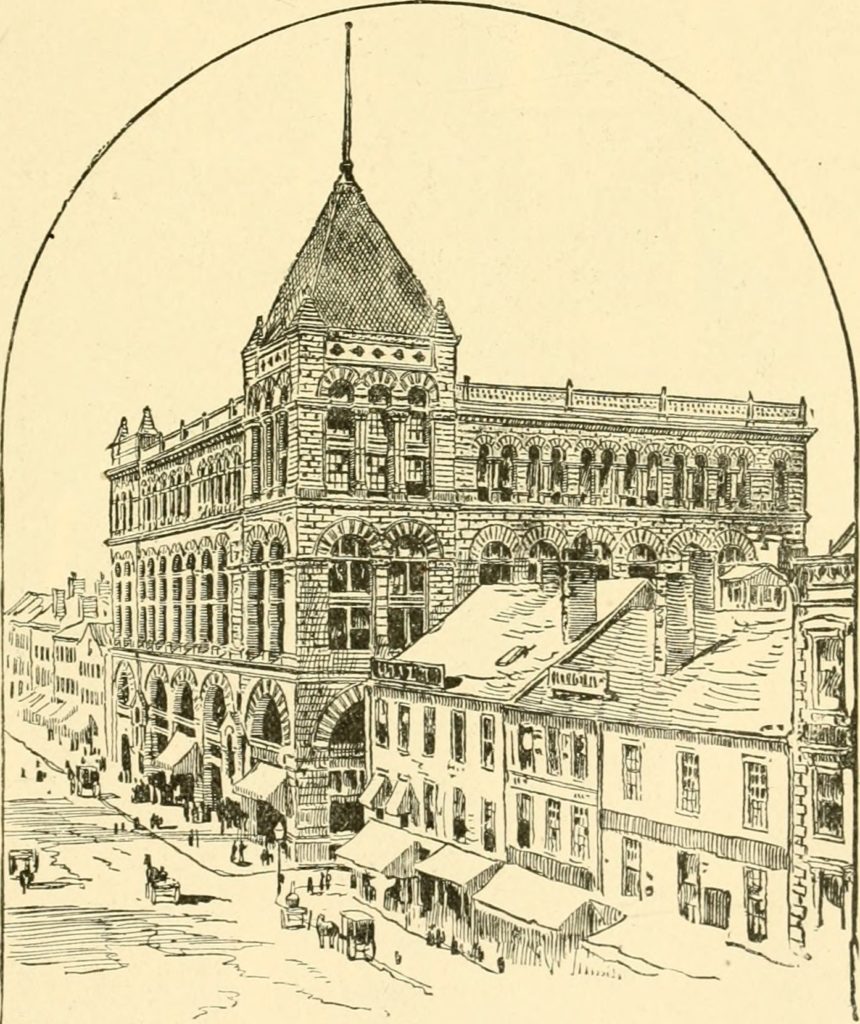
Main Street, Hartford from “Hartford, Conn. as a Manufacturing Business, and Commercial Center “(The Hartford Board of Trade, 1889)
By Elizabeth J. Normen
(c) Connecticut Explored Inc. Winter 2021-2022
Subscribe/Buy the Issue!
In September 1889 Agnes Watson of Scotland, with her husband and one of her children, visited her uncle Henry Affleck in Glastonbury. Watson described Glastonbury as not so much a town as a “settlement,” though she noted its “post-office, manufactories, such as soapworks, a tannery, a creamery, and shirt and collar factories.” She marveled at the “acres and acres” of peach orchards “loaded with their delicious fruit.”
The Watsons spent a few weeks with her uncle, a tobacco farmer, and visited friends and relatives in other parts of the state. Watson’s letters home were published in Scotland the following year as Our Trip to America: Being Diary and Letters written during a Holiday Tour in the Autumn of 1889 (Olive and Boyd). The letter below, about a visit to Hartford, is among several included in The Acorn Club’s Connecticut Observed: Three Centuries of Visitors’ Impressions, 1676 – 1940 (1999). Though Watson’s observations aren’t always accurate, she provides a wonderful snapshot of what a tourist would see, do, and eat while visiting Connecticut in 1889.
Glastonbury, Conn., 4th September 1889
My Dear Adam,
… In the early morning we went by stagecoach to Hartford, which is now a large city. When our friends lived there it was quite a small place. It now has its banks and insurance offices, its colleges and seminaries, its orphanages, its institutions for the blind, the deaf, and the dumb. All those buildings are resplendent in architectural beauty. There is what is called the “Capitol,” a vast building in which is kept the charter of American freedom, and there the law-courts are held. The Capitol is built entirely of white marble, its many pillars of Aberdeen granite, its floors of mosaic tile. … On its summit is an immense gilded dome, surmounted by the figure of Liberty in bronze. We were partly hoisted and partly climbed to the summit—240 feet…. I also sat in the State chair of the Governor of the United States, a chair which cost £100 to carve out of an old oak, in which had been hidden the charter during the last war. Much ground around this building is beautifully laid out; there is also the soldiers’ and sailors’ monument; but as I have bought some of the views, I shall spare you a further description.
From the Capitol, [cousin]Libbie took us to a fine hotel, where we dined. We had a splendid dinner, with a choice of many dainties, but Maggie and I dined on “Blue Fish” (like our mackerel), chocolate cream, and pumpkin pie (most delicious…). We were waited upon by black servants—mostly coloured men and women are employed for labor. Machinery suspended from the ceiling kept sets of fanners, (such as I have seen on a windmill), in continuous motion, and these made the air delightfully cool. Afterwards Libbie engaged a carriage and pair, and we drove to Spring-Grove Cemetery, where George Affleck lies buried; then to Zion Hill, where Uncle Henry has a monument erected to the memory of James and Jane Hunter (your great-grand-parents)… At last we returned to our stage-coach, a ramshackle affair; and as for roads, the very meanest of our country lanes in Scotland is as good as the finest road in Hartford. Driving six miles from it to Glastonbury, the roads are like a ploughed field… . At length we reached Libbie’s, where we had tea… .
Your loving Mother.
Explore!
For more about Victorian Connecticut see our Fall 2021 issue.
Connecticut Observed: Three Centuries of Visitors’ Impressions, 1676 – 1940, AcornClubCT.org
GO TO NEXT STORY
GO BACK TO WINTER 2021-2022 CONTENTS
